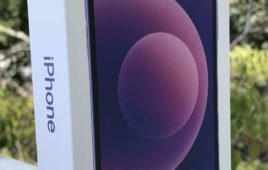T-Mobile’s announcements Wednesday that it will offer unlmited international data roaming and free texts in over 100 countries, as well as 200 million POPs covered with LTE, are yet more reasons the un-carrier is succeeding at its mission to become the value offering in America. Whether you’re a fan of the company’s device upgrade and financing initiative, it is undeniable that Jump! rattled some cages; we have Next, Edge and One Up as proof of the extent to which AT&T, Verizon and Sprint watched that un-carrier move.
Previous un-carrier salvos were important, but unlimited international roaming was perhaps the most significant because it gives T-Mobile dominance in at least one category. While the 55 million people who travel overseas from America every year only amount to about 10 percent of the U.S. population, that’s a significant pool of customers that are now given yet one more reason to consider T-Mobile. And let’s not forget that the United States borders Canada to the north, and Mexico to the south; those are expensive data roaming territories for many.
But there’s more than just the size of the base to whom this kind of deal will appeal. There’s also the convincing nature of T-Mobile’s move. Legere and company did not just undercut the truly ridiculous international data rates currently offered by AT&T ($30/120MB) and Verizon ($25/100MB), rather they tacked it on as part of their existing plans. This is a value-add that could save a large company tens of thousands of dollars per year.
What’s interesting about where T-Mobile stands in all of this, is that Sprint seems almost at a standstill. In the wake of the Softbank buyout, Sprint has clung to its Network Vision intiative. While Network Vision is an impressive initiative, it means absolutely nothing to the average consumer. Meanwhile, the most interesting thing Masayoshi Son has said recently is that it takes “time to get devices ready and prepare service and the network…At the very least you need half a year or a year. And for anything substantial you need one or two years.” That’s not the kind of messaging to which consumers or investors respond.
As the only other challenger after AT&T and Verizon, Sprint’s lack of action is indeed a plus for T-Mobile. Putting Dan Hesse in commercials as the face of Sprint, at a time when the carrier was struggling to improve its customer service record, was a good and effective idea. But right now, in the face of a disruptive, and outspoken John Legere, who is pushing a message that aims to break from the traditional approach to wireless service, Sprint needs more than trust and familiarity if it’s going to remain relevant.
As I said here, and here, AT&T and Verizon may find themselves looking over their shoulders more often as we move forward. T-Mobile is now the best offer in at least one category. The question the others have to ask now is whether it can be the best at anything else.




